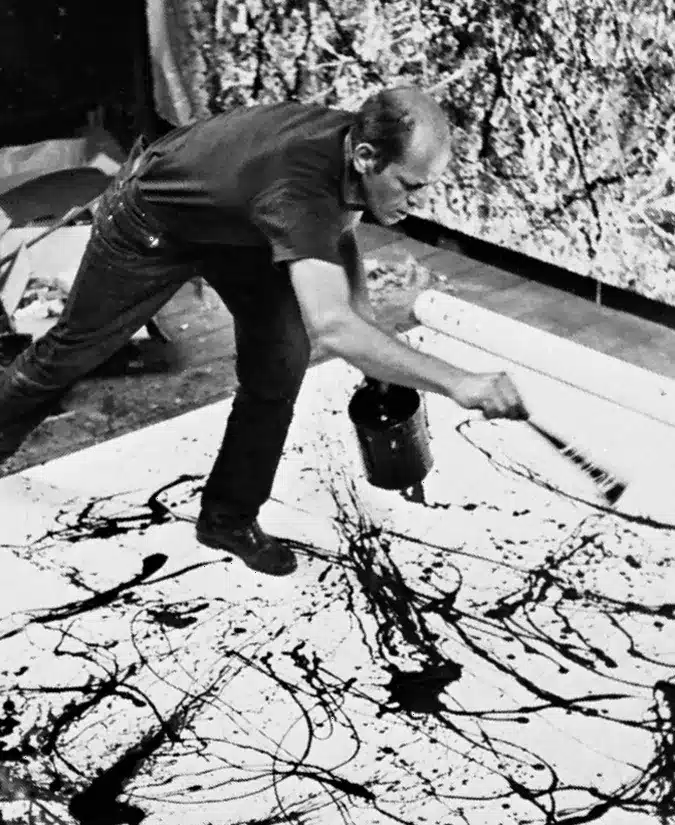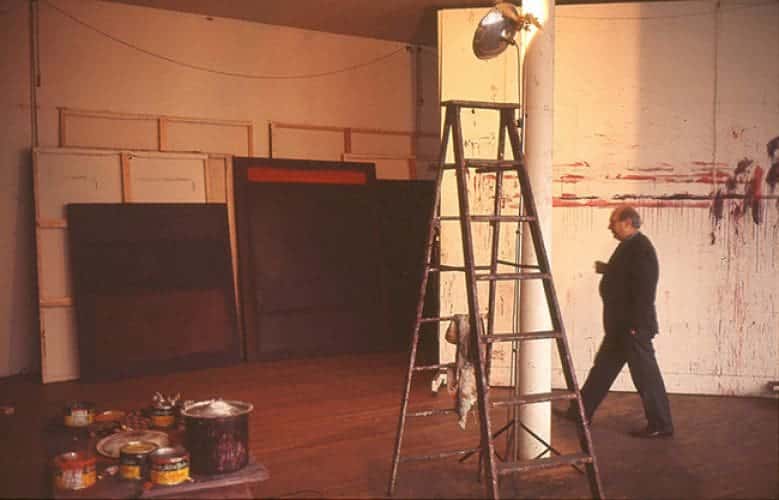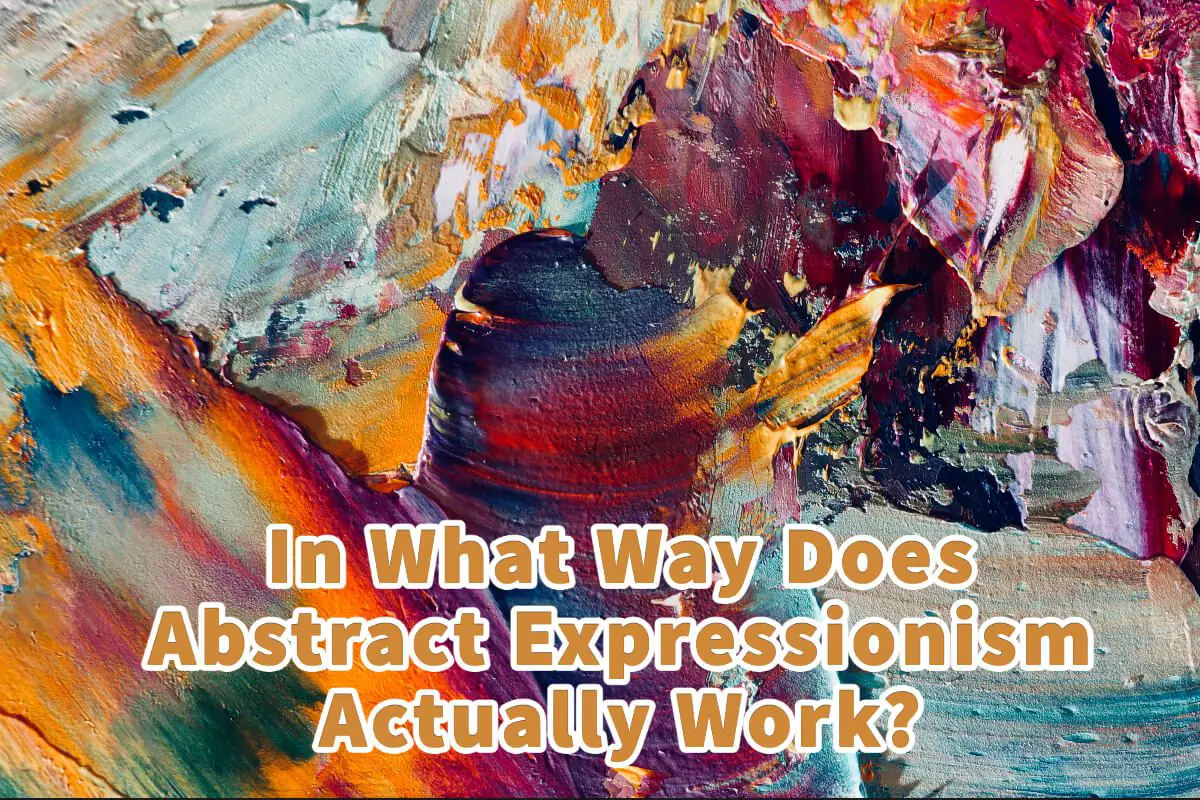Many people look at Abstract Expressionism and wonder if it is art. Others think a five-year-old painted it, or they wonder how Abstract Expressionism works.
Abstract Expressionism was an art movement that started in the 1940s and 50s in New York City. It was an art movement that would change the world forever and how the world viewed art. There are two main ways that Abstract Expressionism worked: with action painting and through color field painting.
About Abstract Expressionism Art
Abstract Expressionism art started in New York City in the 1940s and 50s after World War II.
At that time, Europe was still in devastation due to the war; Europe was rebuilding their cities and lives. America had just come back from the war with their spirits were high as they had helped win World War II.
At the same time, the world was starting to change. In the late 1940s, everything was beginning to change. Elvis Presley would soon change the music world, same with the Beatles.
At the same time, a group of American artists in New York City were changing the art world. They became known as the New York School or Abstract Expressionism and started to create art that would change the art world forever.
Abstract Expressionism is a term used for this new form of abstract art developed by American painters such as Jackson Pollock, Mark Rothko, Clyfford Still, and Willem de Kooning in New York City in the late 1940s and 1950s.
Abstract Expressionism is an art movement characterized by the paintings’ spontaneity, gestural brushstrokes, and mark-making. The artist also used freedom in the application of the art. That is why even among abstract expressionism artists, you will see many types of art that differ in their application and technique.
Types Of Abstract Expressionism Explained
When you look at Abstract Expressionism, most people characterize it into two types Abstract Expressionism; the two types are action painters and color field paintings.
Abstraction Expressionism Action Painting
Action painting is when the artist interacts with the painting; in other words, his actions of how he applied the paint made a difference for the painting itself. The painting was not about a specific subject matter as much as the action of his creating the painting.
The two major art creators were Jackson Pollock and Willem de Kooning. They work spontaneously to improvise using large brushes onto the canvas surface.

Jackson Pollock was famous for putting the canvas down on the floor, smoking a cigarette, drinking alcohol while dancing, painting, dripping, and pouring paint on as he worked. He painted his canvases layer upon layer upon layer of paint.

Willem de Kooning did not drip as much as he used large brushes, marks, and vague references in his painting. For him, the painting was not about the painting subject, but instead, he gave us a view into how he saw the object or was he was painting.
Both of their works of art are very different, but they fall into the action painting category because of the spontaneity and the way and manner in which they painted.
Abstract Expressionism And Color Field Painting
The other group under Abstract Expressionism painting is called color field painting. This group includes abstract expressionism painters marked by Mark Rothko, Barnett Newman, and Clyfford Still.

Their interest mainly was creating simple compositions on the canvas with large areas of color meant to produce a contemplative or meditational feel.

They were also very interested in myth and religion. For them, the paintings were not just about the color but how you felt; the color field painting developed in the 1950s was also characterized by the artist using a single flat color.

For all of these artists, it was about breaking the boundaries of art and exploring new techniques and ways to rethink art as we once knew it. These Abstract Expressionism artists broke the boundaries of art as the world knew it at the time.
That is what makes Abstract Expressionism such an essential art movement. It was an art movement that changed the art world forever.
Anita Louise Art is dedicated to art education, great artists, and inspiring others to find and create their art. We love art that uplifts and inspires. #ArtToMakeYouSmile! #ArtToMakeYouHappy!
If you are interested to see any of my art, you can find out more by clicking here. If you are interested in what inspires me and my paintings, you can discover more by clicking here.
We have a free newsletter and would love you to be part of our community; you can subscribe to the newsletter by clicking here. I would be happy to talk to you if you have any questions. You can reach me, Anita, by clicking here.
Subscribe to our Anita Louise Art YouTube Channel with great videos and information by clicking here.
Join us for our podcast “5 Minutes With Art.” Spend just 5 minutes a week with us to discover and learn about great art and artists. You can find out more about our podcast by clicking here.
Related Questions
What Is The Cultural Significance Of Abstract Expressionism Art?
The cultural significance of abstract expressionism art is that it was a forerunner for the cultural changes in the United States in the 1950s and 1960s. The Abstract Expressionism movement started after World War II in the 1940s and continued into the 1950s. The world saw significant cultural shifts in the 1950s and the 1960s.
By clicking here, you can learn more by reading What The Cultural Significance Of Abstract Expressionism Art Is?.
Is Vincent Van Gogh An Abstract Artist?
Vincent Van Gogh was not considered an Abstract Artist but regarded as a Post-Impressionism artist. He is known to have admired the Impressionist artist, but he never saw himself as part of the group of Impressionists. Van Gogh had a unique style and choice of colors for his paintings.
You can learn more by reading the blog Is Vincent Van Gogh An Abstract Artist? by clicking here.
Abstract Painting Skills And An Artist’s Drawing Ability
When an artist is trained in drawing, composition, and color theory, their formal or informal training is reflected in their artwork. You can tell the artist’s skills by executing the painting using their drawing, composition, and color theory skills.
You can read more by reading our blog Abstract Painting Skills And An Artist’s Drawing Ability by clicking here.

